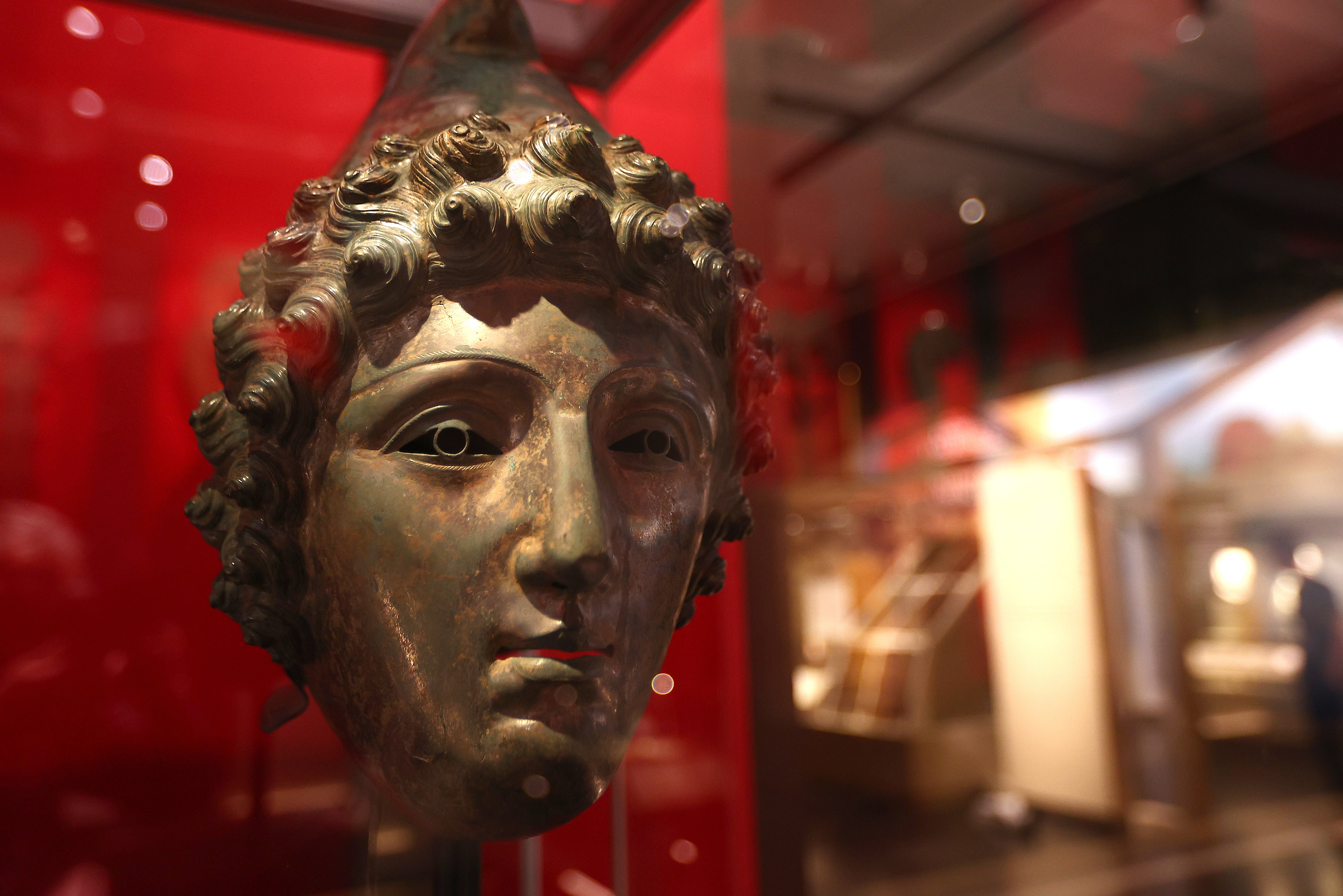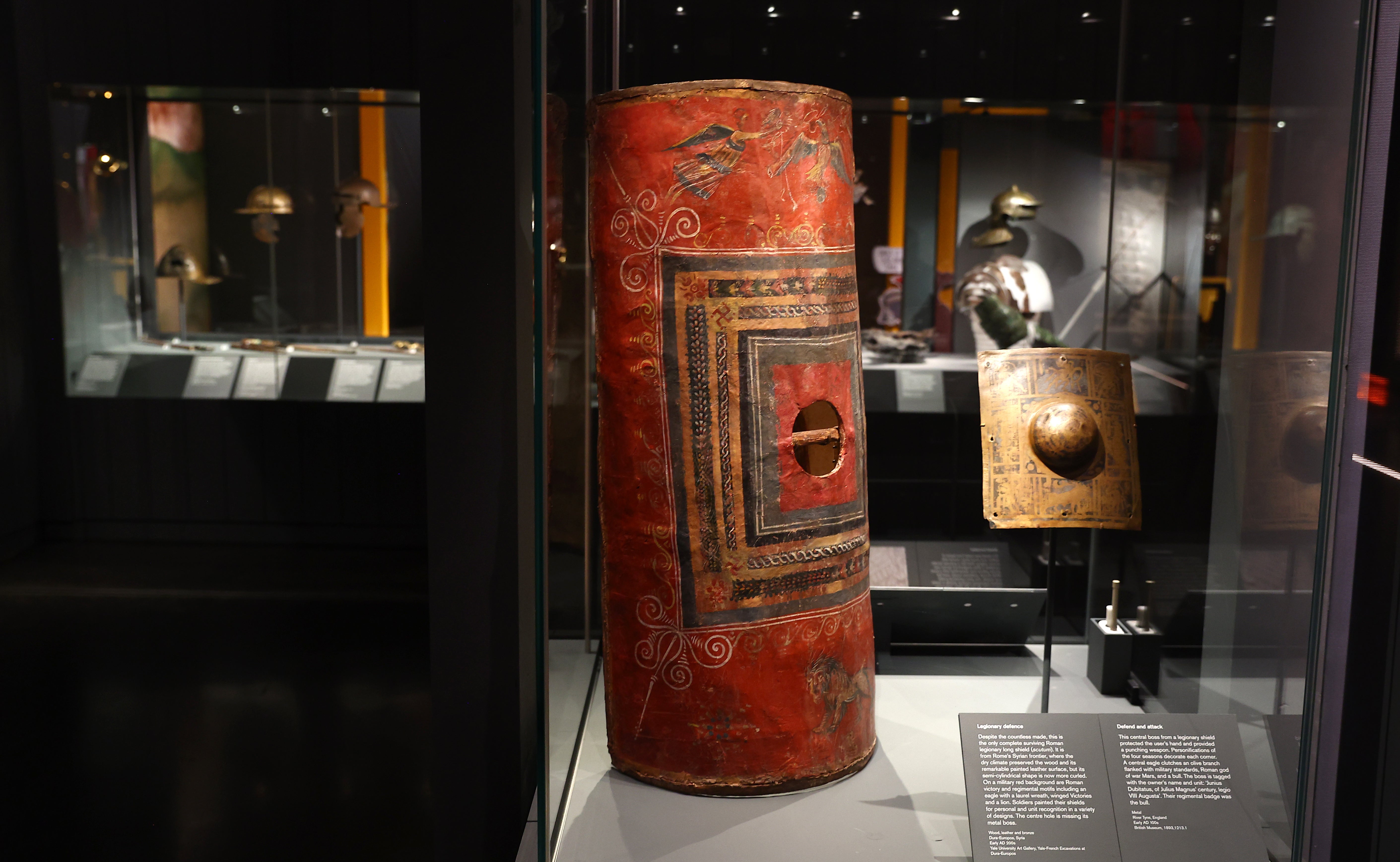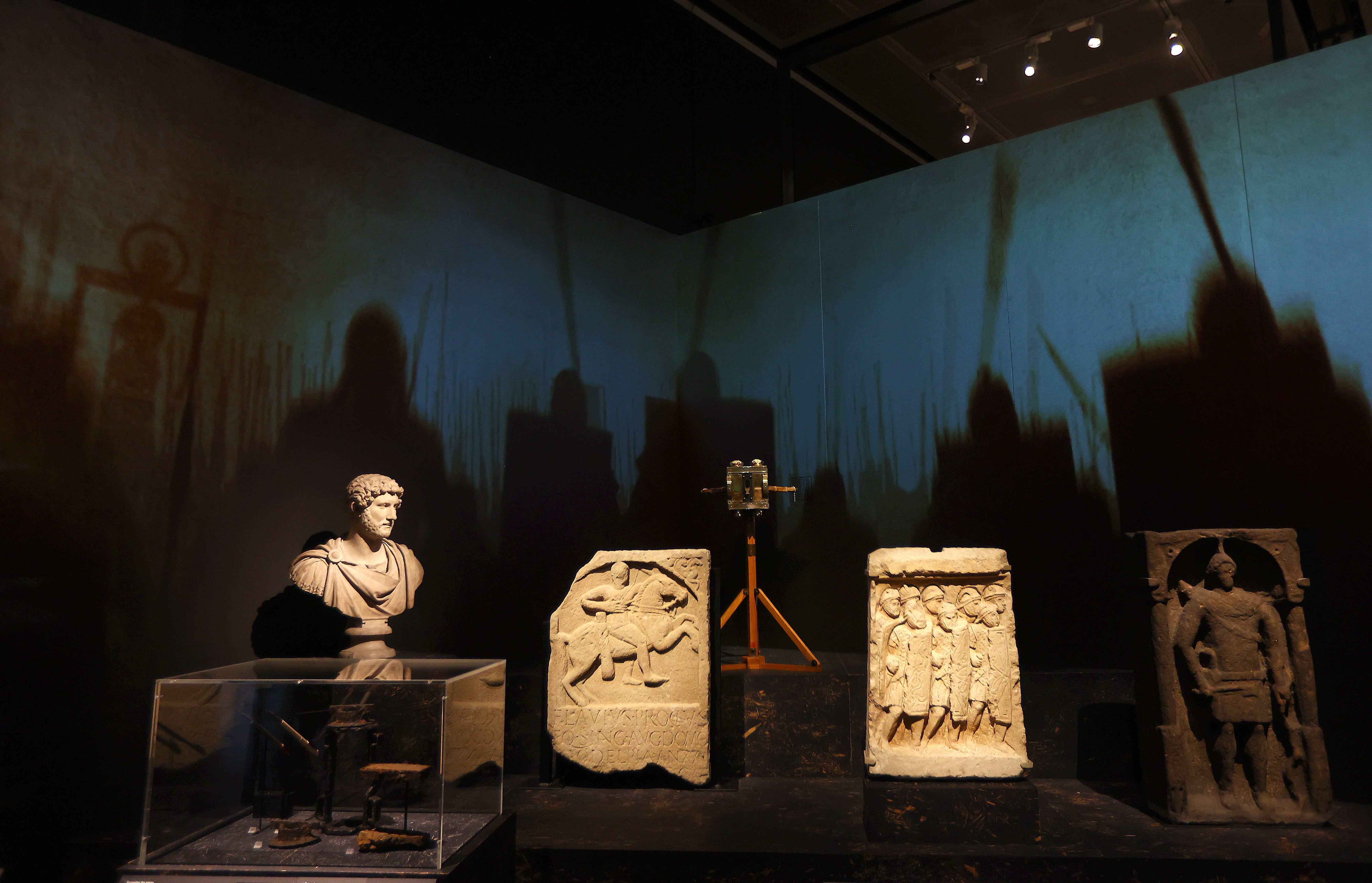Cold feet and pension problems – what it was really like to be a Roman legionary
Rome was a glorious idea but it was also a very human endeavour. As a revelatory new show about the brutal and banal everyday life of ordinary soldiers opens, Michael Hodges explains why, centuries after they left our shores, we are still gripped by the greatest of all empires…

A lone red sock sits among the stop-you-in-your-tracks bronze cavalry helmets, crocodile-skin armour and other remarkable pieces that litter the halls of Legion: Life in the Roman Army at the British Museum. The show is aimed squarely at our apparently unending fascination with all things Roman but this small, uncannily well-preserved, item of knitwear, made in Egypt between 200 and AD400 with a separate pocket for the big toe, contains its big revelation.
Rather than a merciless killing machine imposing imperium on the barbarians, legionaries were the poor bloody infantry, obliged to arm and clothe themselves and often suffering from cold feet. Rome was a glorious idea but it was also a very human endeavour.
We suspected as much. The one thing every Briton learns about Hadrian’s Wall, apart from it now being shorn of a much-loved sycamore tree, is that the legionaries who manned it wanted warmer footwear.

“I have sent you pairs of socks from Sattua,” reads Vindolanda tablet 346, one of the hoardes of ink-on-wood letters first discovered in 1973 at the Northumberland fort near the wall. The writer adds that they have also enclosed “two pairs of sandals and two pairs of underpants” before signing off: “I pray that you live in the greatest good fortune”.
The British Museum’s show is themed around another legionary in search of footwear. Terentianus was a 2nd-century Egyptian lad with military ambitions but no social connections. Consequently, immediate entry into a swanky legion was out of the question so he signed up with the unfashionable marines and worked his way up. He complained a lot and went through two pairs of socks a month. We know this because some of his correspondence survives as papyrus fragments; a survival that feels as miraculous as that of the show’s headline exhibit – the last legionary shield in existence.
Poor Terentianus. So many of his worries mirror our own contemporary concerns: why are other people so difficult? Will I be promoted? Why is everything so expensive? Will I make it to my pension?
Once a legionary had taken the oath and sacrificed a piglet, revealed here as the army’s unusual start-of-service ceremony, there were 25 years to complete until retirement. Before then, the only way out was to be injured or killed, which happened a lot. The show features several stone funerary monuments that bear rough-carved figures with knobbly knees, bumpkin fringes and tiny feet – these are the likenesses of the men who didn’t make it.
Such objects were found from the Nile to the Clyde, and through them the vast extent of Rome’s control is made clear. This was a Remainer’s empire, a proto-EU with world-conquering ambitions that slipped the bonds of its own continent and reached into Asia and Africa. It naturally reminds those who regret Brexit of what was lost in 2016.

But Rome was a European superstate that didn’t include Germany; any chance of expanding beyond the Rhine was ended at the battle of the Teutoburg Forest in 9AD when Germanic tribes destroyed three legions in the woods. There was no tombstone for centurion Marcus Caelius, the first cohort of a legion lost at Teutoburg, as his body was never found. Rather, there is his famous memorial cenotaph (seen here as a replica on loan from the Landes Museum in Bonn) which shows a determined and much decorated figure – far grander than Terentianus – still unwilling, even after death, to admit to losing to the unwashed hordes. Rome, triumphant even in defeat.
Will thousands of us traipse around the British Museum to see very old bronze armour and funereal monuments with the noses chipped off? I suspect that we will; look how many of us bought SPQR by Rome’s champion, Mary Beard. Sixteen centuries after they left our shores, the legions hold our imaginations in their grip. This is driven in part by Hollywood and television. Gladiator, now 24 years old, still casts a Russell-Crowe-in-a-leather-skirt-shaped shadow over our popular culture. And who, if they watched it, has fully recovered from Britannia, Jez Butterworth’s insanely camp account of Rome’s AD43 invasion of these isles for SkyTV?

But it’s more than movies for the British. If you were brought up anywhere below the Antonine Wall, the stone and turf fortification across Scotland’s central belt that marked the northern limit of Roman settlement, then the remains of Roman occupation were around you. In my case, it was a stretch of road built by the legions across the wind-blown North York Moors (a place where you need socks). This civil engineering project so staggered later Anglo-Saxon settlers they could only explain it as the work of a giant called Wade.
Like the Anglo-Saxons, we are in awe of the Romans. They are the significant others that haunt our countryside and cities, the civilisation that came first and did it better. We measure ourselves against them and find we are wanting. Things the British can no longer take for granted worked as a matter of course in Roman Britain. Local government, plumbing, the postal service – how else did tablets get from Syria to Tyneside? – and roads. One of the most poignant things in the show is the tall milestone which carries in Latin the message “eight miles to Canovium”, today’s Conway in North Wales and leaves no doubt that you could expect to get there safely and on time.

That milestone was dug up in the 1880s. Since then, advances in professional archaeology and mapping technology have enabled us to find many more remnants of ancient Rome. Last year’s dig at Pompeii recovered an intact chariot but also revealed a fresco of what appeared to be the first-ever pizza, a 2,000-year-old flatbread sprinkled with white cheese.
We expect such finds in Italy but because men like Marcus Caelius and Terentianus buckled on their breastplates and set out to serve the emperor, this country is also a repository of wonders. In 2021, a huge Roman villa complex, described as a “party venue”, was found underneath a council estate outside Scarborough. A year later, archaeologists working up the road at Vindolanda excavated a stone carved with a giant phallus. Beneath, there was an inscription where one solder declared another, a certain Secundias, to be “a shi**er.” Let’s hope they made up and lived on in the greatest good fortune.
Legion: Life in the Roman Army is at the British Museum until 23 June 2024
Join our commenting forum
Join thought-provoking conversations, follow other Independent readers and see their replies
Comments

Bookmark popover
Removed from bookmarks